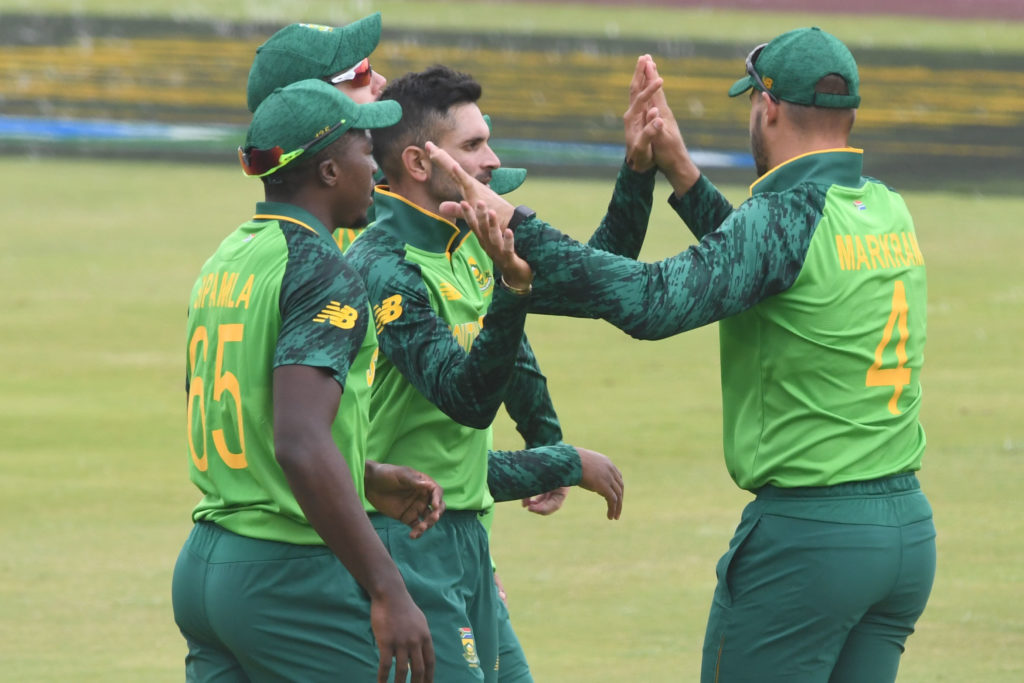Keshav Maharaj hasn’t played a T20I game for the Proteas, but he could be the missing piece in the bowling puzzle for the World Cup, writes RYAN VREDE.
I watched Maharaj against Ireland in the Proteas’ opening ODI and wondered again why he has been overlooked for the game’s shortest format.
His control, variation and tactical intelligence on a flat deck was excellent. The two formats demand different things, certainly, but those differences are not so significant that they explain why Maharaj has not been trialled in the T20 format.
This is not an argument against either George Linde or Bjorn Fortuin, both of whom are highly competent with the ball and offer more than Maharaj with the bat. It is an argument for the bold step of playing three spinners and dropping a fast bowler.
Hear me out.
It is no co-incidence that nine of those bowlers currently ranked in the world’s top 10 in T20 cricket are spinners. Just one of those is an off-spinner, although the top-ranked Tabraiz Shamsi is a left-arm unorthodox bowler (stock-delivery spins from left to right like an off-spinner). Two of the men in the top 10, Ashton Agar (third) and Mitchell Santner (10), are left-arm orthodox bowlers.
Of course, there is nuance to the argument but, fundamentally, there is clearly success to be found in taking the nut away from right-handers, which the vast majority of the game’s elite batters are (just three of the top-10 ranked T20 batters are left-handed). In this context, I fail to understand Maharaj’s continued omission.
Maharaj’s case was strengthened during the CSA T20 Challenge earlier this year, where he finished with eight wickets (sixth highest in the tournament) and a mind-blowing economy rate of 4.54 (best in tournament by some distance) after having bowled more overs than all but one other.
His value to the Dolphins couldn’t be overstated in a format where exerting pressure is a primary focus and success in doing a so amplifies the chance of winning.
It made sense to me at the time that Maharaj would be trialled at international level, in order for the selectors to establish if his competency is replicable against the game’s best. It still hasn’t happened, and it’s perplexing.
There is a reluctance to move beyond the traditional Proteas mould of having three frontline seam options, despite the World Cup being hosted in the UAE and Oman where the ball will turn, and just days after the IPL concludes, meaning well-worn wickets. Add in the heat, resulting in wickets being dry and spin friendly, and theoretically you have the perfect conditions to explore a bold selection path.
There’s a glaring space for a third spinner as well, given Lungi Ngidi’s struggles to match the consistency of his seam partners, Kagiso Rabada and Anrich Nortje, on the tour of the West Indies. Ngidi is a young bowler who will improve in time, but, with just six matches to play before the World Cup, time is not a commodity the Proteas have a lot of.
Maharaj’s experience means an adaptation process will not take the time it would a rookie. It will be clear pretty quickly whether he adds value and dimension to the attack. If he doesn’t, we move on. It really is that simple.
Not exploring this option feels like negligence in preparation from the selectors.
There is still an opportunity for them to check their conservatism. I hope they do so.







